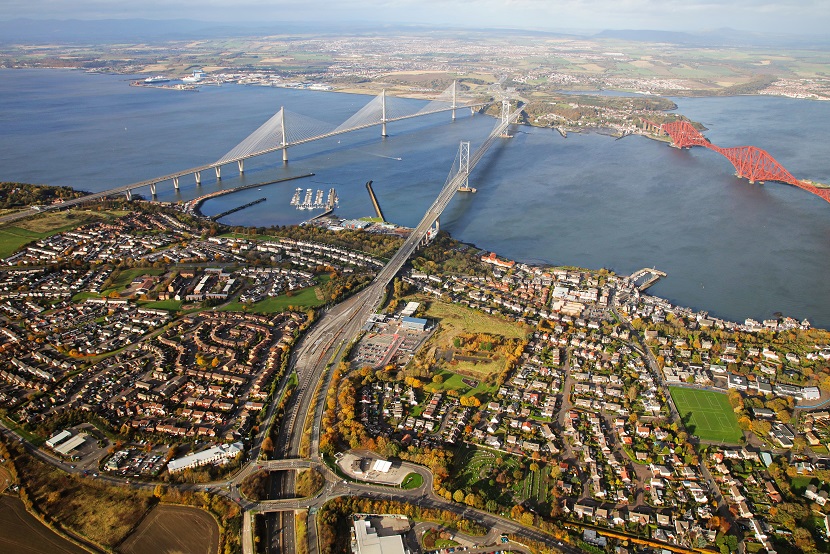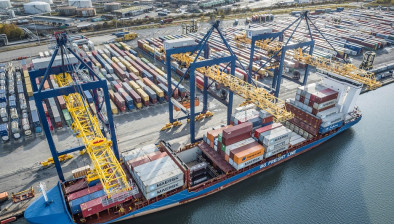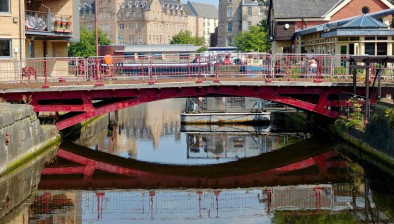Firth of Forth net zero hub ‘key’ to achieving climate goals
Scotland could advance its ambitions to achieve net zero by 2045 by establishing a net zero hub on the Firth of Forth, research from global natural resources consultancy Wood Mackenzie has found.

According to the paper, the development of net zero hubs around the UK has proved a key plank of the country’s strategy towards achieving its own net zero target by 2050.
Malcolm Forbes-Cable, vice president, consulting, said: “The Firth of Forth area is Scotland’s major industrial cluster. The area is responsible for more than 10% of Scotland’s emissions but is critical to the Scottish economy.
“Establishing a net zero hub on the Firth of Forth would complement the development of Scotland’s Net Zero Roadmap, and become a key element of national efforts to deliver net zero.”
The UK was the first major economy to commit to net zero and had a running start due to the success of the offshore wind sector, which had 10 GW of installed capacity by 2020 and is on course for 40 GW by 2030, the paper noted.
“However, the UK currently has no carbon capture utilisation and storage (CCUS) operational today, but an ambitious government target of 10 million tonnes CO2 installed capacity by 2030. The UK’s low-carbon hydrogen production is in a nascent stage of development, but together with renewables and CCUS, is a key pillar of the future energy system,” it added.
This, it said, highlights the need for coordinated industrial policy and a clear strategy that incorporates:
- sustained investment in new technologies, national infrastructure and industrial hubs;
- a regulatory environment fit for an integrated energy system;
- and fiscal and industrial policies that create the markets to allow the low carbon economy to flourish.
Scotland’s critical role in supporting the UK’s net zero ambitions was highlighted by its vast offshore renewable resource potential combined with a rich oil and gas legacy which the paper said has created deep offshore engineering and subsurface expertise, extensive oil and gas infrastructure, and established a reputation for excellence in the global energy business.
The Firth of Forth captures both the challenges the UK and Scotland face to decarbonise, but also the opportunities that will emerge in a low-carbon economy both domestically and internationally.
Mr Forbes-Cable said: “Scottish industry currently emits about 10.7 million tonnes of CO2 per year, and the Firth of Forth accounts for about 10% of Scotland’s total emissions.
“At the same time, the industries in the region host the skills necessary to address the technical and commercial challenges faced in delivering net zero. It is a significant part of the net-zero challenge, but a major part of the solution and a cornerstone of the current and future economy.
“By some margin the Firth of Forth region is Scotland’s largest industrial cluster – and represents a material part of the Scottish economy. With only 24 years until net zero 2045, tackling these emissions will be fundamental to achieving this ambition.”
Across the UK, a number of net zero hubs have been developed around major industrial clusters, including Net Zero Teeside, Zero Carbon Humber and HyNet North West. These hubs have galvanised around their net-zero identities supporting the transformation to the integrated energy and industrial hubs of the future.
Carbon capture and storage, blue and green hydrogen production, biofuels production, renewables equipment manufacturing and offshore wind servicing are developing alongside traditional industries such as steel, cement, refining and petrochemicals, supporting their transition with clean power and emission mitigation technologies.
Mr Forbes-Cable added: “Running down and ultimately offshoring high-emissions sectors would help to meet the UK’s emissions objectives, but, in the process, destroy the country’s industrial base and for no net global reduction in emissions.
“For core industries that are vital to the economy, the UK must resolve how to cut emissions and mitigate the remainder. It is a tough line to walk but success will reinvigorate the industrial base securing jobs and the foundations of the national economy.”
He said creating a Firth of Forth Net Zero Hub would acknowledge the challenge head on. It is an economically important industrial cluster that needs to tackle its emissions and fulfil its role as an important agent in the national energy transition and delivery of net zero.
“As has been the case with other net zero hubs, such an ambitious project will require government support,” Forbes Cable said.
“Attracting funding requires a clear plan that defines the ambitions, lays out the challenges and identifies projects that will help to deliver on net zero. The plan must also highlight the strategic, economic and social benefits.
“The Firth of Forth Net Zero Hub would be complementary to other Scottish energy transition initiatives. This is not about one area competing against another, but about a national effort to deliver net zero.”
Welcoming the report, Charles Hammond OBE, Group CEO at Forth Ports, said: “Wood Mackenzie’s report and conclusions are timely and incisive. At Forth Ports, our vision is to create a Greenport ‘Hub’ and ‘Green Growth Corridor’ at the heart of Scotland that delivers a just and practical energy transition to meet the UK and Scottish Governments’ Net Zero and Energy Transition targets.
“We want to collaborate with the whole of Team Scotland to create new, high quality green energy jobs that will enhance Scotland’s Central Belt industrial powerhouse while tackling deprivation around our ports, contributing to the levelling up of the large industrial areas in our coastal communities. This is already under way in Leith where we have announced a privately financed £40m investment in a renewable energy hub at the port.
“These industrial areas must play a vital role in facilitating the country’s Net Zero and Energy Transition ambitions and creating new, high quality green energy jobs. We want our ports in the Forth Estuary to assist Scotland in achieving its carbon reduction targets by supporting offshore wind development and working with industry and stakeholders to deliver new, low carbon fuels and technologies, such as hydrogen and carbon capture.”





















